Life and Works of Dr. Anath H. Pandya
Excerpt from an article by Lily Pandya.
Just before the beginning of the Second World War, the Bengal Engineering College at Sibpur was seeking a new Principal. The post had always been held by an Englishman and, thus, the advertisement came in the London papers only. Anant applied and was recommended by the English Committee, but the Government of Bengal hesitated and referred the matter back to London, but, again, the Committee recommended Dr. Pandya, and in September 1939, Dr. Anath H Pandya was appointed as its first ever Indian Principal. And Dr. Anant Pandya was aged only thirty when he took over the charges of Bengal Engineering College.
Dr. Anant H. Pandya (1909 – 1951), the pre-eminent engineer, educator and public servant, was a pioneer of India’s industrial, and educational technical future. A tragic accident cut his life short before his forty-second birthday, but his life remains an inspiration and a model for the young engineers and scientists community.
Early Life
Anant was born on July 11, 1909, at the Pandya family of Bhavnagar, Saurashtra in Gujarat. He was the second child and the first son of his parents’ eleven children. His mother, Puriben, lived a life devoted to the joint family. His father, Hiralal H. Pandya, during few years of Anant’s childhood, was away completing his education in the United States. On return he joined as an agricultural engineer of several princely States. Anant grew up in Bhavnagar under his grandfather’s care and guidance. Anant’s grandfather, Hargovind Pandya, was a railway station master, and his primary interest was education; he helped to found a center of new nationalist education, the Dakshinamurti Vidyarthi Bhavan.
From early childhood Anant arose with Hargovind at 5 A.M. and followed him through his regimen of hymns and prayers, exercise and cold bath. Before joining any school Anant was learning epics of Ramayana and Mahabharata and also playing with blocks and other toys sent by his father, showing the technological wonders of the United States. His education at the Dakshinamurti Vidyarthi Bhavan emphasized overall development, students deeply imbued with Indian music, art and culture, taught science first-hand in the surrounding fields and hills, and introduced to each important person who passed through Bhavnagar. In this way, Anant served as a volunteer in Mahatma Gandhi’s camp, could talk with Rabindranath Tagore, studied physical culture with revolutionary Prithvi Singh, and heard the music of many of India’s foremost musicians. Creativity and individual thinking, patriotism and national feelings were emphasized, and Anant became the school’s best student and a capable artist.
As an adolescent, Anant and his cousin, and companion through all his south, Upendra Bhatt, started a hand written monthly literary magazine, Kumar. Anant did the illustrations and won prizes for several of his paintings and drawings.
At fifteen, when Anant and Upendra completed secondary school, they had to take a difficult decision. Upendra relates: “If we wanted to pursue the study of literature, economics and social sciences or wanted to join the upsurge of nationalism, the way was clear to Mahatma Gandhi’s Gujarat Vidyapith. If, however, we wanted to pursue science or engineering, there was no other go, but to pass Matriculation of the Government sponsored University. It was considered a sin to go to a government school in those days of patriotism and national fight against foreign rule. On the other hand, we felt that science and engineering were inevitable for national reconstruction. Our trusted teachers analysed the question as self-aggrandizement (Government school of Engineering) versus renunciation (Gujarat Vidyapith). Certain desires, ambitions and attitudes led us to the path of science.”
Education
They passed Matriculation from Bombay University, then studied for a year at Samaldas College in Bhavnagar and then, in June 1926, took admission at Gujarat College, Ahmedabad, for science. Besides being the capital of Gujarat and a center of culture, Ahmedabad was Mahatma Gandhi’s residence and the seat of his Gujarat Vidyapith. Anant and Upendra were associated with many of the Vidyapith’s activity and often stayed overnight there so as to attend Gandhi’s early morning prayers. They often met noted artist Ravhishankar Raval and others at the offices of “Kumar”. They continued their early morning schedule at Gujarat College and did most of their homework from 7-10 A.M. They also participated in college sports, science exhibitions and military training. Anant finally passed Inter-Science in 1927 and joined the Engineering College in Karachi.
In Karachi, their daily program was vigorous but proved itself by their academic records. From morning 3.15 A.M., they had routine for studies, and also morning physical exercise. In the evenings, they usually took long walks. This schedule continued even during vacations. They raised support for nationalist movement by establishing the First Congress Youth League, negotiating with the college for closing the college for a day to protest against Gandhi’s imprisonment, and fasting to save money for flood victims. Finally, Anant became the topper with a first class for all the three years in Karachi Engineering College. He won several scholarships and gold medals including the coveted James Berkeley Gold Medal. Opportunities were open to him in the Indian Services of Engineers and also as a scholarship student in the best British Universities, but decided to join the world renowned Masachusetts Institute of Technology, (M.I.T.) USA.
Anant excelled in all the subjects, secured extra-ordinary marks in the subjects he selected. He enhanced the prestige of the Indian students, and his attainments served as a beacon light to those who followed. By taking extra assignments during the summer of 1931, he was qualified for the degree of Master of Science in Civil Engineering within one year. In his second year, Upendra and Ramesh joined him at M.I.T. Upendra Bhatt relates: “The American way of life demonstrated to us the ideal of individual liberty and democratic social order. We, students, formed the Hindustan Association and expressed our national aspirations. We realized that America’s wealth and strength consisted in development of the country’s resources through Technology, and we also dreamt and planned the development of India on the same lines’
Anant secured the Austin Research Fellowship for research in Soil Mechanics and within a period of a year and a half completed his thesis on “The Design and Construction of Ports and Harbours”, and also another work on “Large Dams”. By August 1932, at the age of 23 he was elected a Member of the American Society of Civil Engineers. In 1933, he was one of the first and youngest to receive the Doctorate of Science in Engineering. Many of his professors considered Anant the finest student of their teaching career. Anant had completed all his graduate training and his doctorate with the highest distinction, even being elected an Honorary Fellow of the Institute.
Outstanding Career
He returned to India at a time of economic depression (late 1933) when American degrees were ‘unrecognised’ by the British controlled and influenced economy. He got a job with a junior design position in the Mckenzies Ltd., of Bombay, at a stipend of Rs.250/- per month. But he could realise no opportunities elsewhere in India. He left for London in Autumn 1935 and within fortnight, he was hired for a major position by the large international firm of Trussed Concrete Steel Co. Ltd. Ironically, in early 1936, he sent to India to advise the Indian engineering firm M/s. Hindustan Construction Engineering. Co. Ltd., which had earlier refused to hire him (because ol his American qualifications) in the design of earthquake proof buildings at disaster-struck Quetta.
During his brief stay to India, Anant married Shrimati Lilyben Shah and both of them returned to London. While in London, he was responsible for the development of new design and construction in steel and reinforced concrete and for research in welded structures. In November 1937, in appreciation of his great ability he was elevated to the important position of Chief Engineer of Diagrid Structures Ltd., a subsidiary of Trussed Concrete. In September 1938, he was awarded the James F. Lincoln Arc Welding Foundation International Prize of $32,000 for a paper on “The Arc-welded. Grid Applied to Plane and Spatial Structures”, written in collaboration with his assistant, Mr. R. J. Fowler. During this period, Anant was a member of many engineering institutions and societies. He made a special study of Structural Air Raid Precautions in England and prepared his own design for a reinforced concrete shelter. This work received praise and appreciation with a merit prize for it. In 1939, he took out British Patent 512867 (also later patented elsewhere) on his process for “Continuous Cranked Beam Construction”. His superior at Trussed Concrete, E. R. Hole, remarks: “Many contracts involving engineering design of a high standard in both concrete and welded steel stand to the credit of Dr. Pandya both in Britain and overseas, and they range over almost the complete scope of industrial, public and domestic building, including aircraft hangers and large factories.”
By then just before the beginning of the Second World War, the Bengal Engineering College at Sibpur was seeking a new Principal. The post had always been held by an Englishman and, thus, the advertisement came in the London papers only. Anant applied and was recommended by the English Committee, but the Government of Bengal hesitated and referred the matter back to London, but, again, the Committee recommended Dr. Pandya, and in September 1939, Dr. Anath H Pandya was appointed as its first ever Indian Principal. Pandya family rushed to leave London before the war, and it was one of the last ships for them to leave for India. Most of their baggage went to a watery grave aboard a following vessel, sunk by German submarines.
Dr. Anant Pandya was aged only thirty when he took over the charges of Bengal Engineering College. With his knowledge and amiable nature, he instantly won the respect and affection of his colleagues and his students. In addition to his duties as Head of the Engineering College, he distinguished himself as a member of the Senate and Syndicate of the University of Calcutta, a faculty member there and at Rajputana University, an advisor to Benaras Hindu University and a Member of the Central Advisory Board of Education and numerous other special Committees of Education for both the Central and Bengal Governments.
Dr. S. R. Sen Gupta, his faculty colleague and later Director of I.I.T., Kharagpur, remarks: “The large body of students and staff of Bengal Engineering College became known to Dr. Pandya personally and unhesitatingly began to approach him for the solution of their personal problems, for advice and guidance. He was kind and courteous to all concerned, students and staff, from the poorest paid employee to the senior most Professor. He extended the same kindly courtesy to everyone with his winning smile. After the outbreak of war, Dr. Pandya was one of the first to realise that it would be essential to extend the technical training facilities for the training of craftsmen, and I know personally that he took the initiative in writing to all the important government officers and placing the facilities of college at their disposal—. He has done more for this college than anyone else before or after him.”
In April 1943, Dr. Pandya’s services were transferred to the Department of Industries and Supply as the Controller of Metals where he was outstandingly successful. Shortly he was promoted to the position of Dy. Director-General of Munitions Production, a post so far not hitherto held by any Indian. At a time when British firms were still favoured in Indian business, Dr. Pandya helped many Indian firms get their start or push on to larger projects. His efforts stimulated many Indians in Government and industry to begin actually planning for the industrial and technological development of their nation. After the war, it was natural that Dr. Pandya was offered a major post with the Central Government’s Planning Department, but politics and communalism intervened, and he was not, finally, offered the post.
During this period Dr. Pandya was made a Member ol the Planning Commission, which was established under the Chairmanship ol Pandit Jawaharlal Nehru. Dr. Pandya submitted a project to establish five IIT’.’s in India on the concepts of Massachusetts Institute ot Technology. Thus he was one of Architects of founding the Indian Institutes of Technology in India.
While Dr. Pandya’s dream for many years had been, as Dr. Antia, his friend and the former Director ol Union Carbide in India, described it: “To harness the big rivers and make them work for the prosperity of the country, to modernize agricultural methods and to make engineering serve the country in such a way as to abolish hunger and want. His main aim was to gather a group of Indian engineers to start a consultancy service. It was not necessary to place foreign consultants on a pedestal as done hitherto. Indian engineers could do as well or even better.”
Dr. Pandya became the Director and Chief Consulting Engineer lor Hind Constructions Ltd. of Calcutta. With his hard work and the prestige of his own name, he secured contracts for the big and complicated works like the construction of the tunnel at the Bhore Ghat for the Central Railway, the building of the tunnel for laying the pipe line for the Vaitarna-cum-Tansa scheme of the Bombay Municipality and construction of the Konar Dam and other projects for the Damodar Valley Corporation, development of the ports of Saurashtra, Kandla Project (Cutch). In these projects,
Early in 1949, Dr. Pandya was requested by the Central Government for a temporary period, the position of General Manager, Hindustan Aircraft Ltd (HAL), at Bangalore, and he was the first Indian national to be appointed as General Manager of Hindustan Aircraft Ltd (HAL). With the approval of his firm’s Directors, he agreed. It is known that during World War II, the management of HAL was solely in the hands of American technicians. C. V. S. Rao, then the Director and colleague at Hindustan Aircraft, said, “Anant infused a new spirit and created a new atmosphere altogether. His charming manners and sympathetic and tactful handling of the personnel won for him the hearts of the staff and the rank and file, while his undoubted mastery of general engineering commanded the respect of even experts in aircraft engineering of which he did not profess to know much. The outstanding event of his brief stewardship was the formation of definite plans for manufacture of Trainer Aircraft. The first planes of Indian design and manufacture in independent India”.
His Sudden Death
When Dr. Pandya could successfully set Hindustan Aircraft on a new and vigorous path, in a brief nine months, he moved his family to Bombay. He was now, primarily, associated with Patel Engineering and looked forward to building it into a pre-eminent firm for large construction projects in India, and eventually, perhaps, elsewhere in the newly developing countries. From December 1949, until his death in June 1951, he pursued large construction projects of dams, ports, and tunnels, including ports in Gujarat, dams in eastern India, and tunnels near Bombay. At that time, he was instrumental in planning the foundations of Indian Institute of Technology (IIT). To understand the new techniques and purchase needed equipment, he travelled to Germany, France and the U.S.A. in 1950, and to Germany and Scandinavia in 1951. While returning to Calcutta, after inspection of Konar Dam in Darnodar Valley, on June 1, 1951, the car in which he was sleeping was struck and he was killed.
He passed away from physical sleep to death, at the age of only 41.
His premature death was a great loss to India and to the world. Patel Engineering has gone on to become a large company engaged in massive projects all over India and elsewhere in the developing nations. The educational institutions which he worked so hard for are turning out first rate engineers, and the construction contractors which he sought to legitimize have begun to receive their rightful support from the Government and the public. The Anant H. Pandya Memorial Scholarships regularly send Indians to the U.S.A, for engineering training. His wife, Lilyben, raised the children in his spirit and now continues his ideas both as a Director of Patel Engineering and as a Municipal Councilor in Bombay. His son has just completed his degrees in electrical engineering and economics at Massachusetts Institute of Technology (M.I.T.) and has returned to take up work in India. One daughter is a micro-biologist, and her husband, Dr. Kirit Yajnik, is a research director at National Aeronautics Laboratory in Bangalore. His second daughter was an economics researcher and lives in the U.S. with her American husband.
In closing, let me quote Dr. Sudhir Sen, who worked with Anant in Damodar Valley and was later an economic adviser in the United Nations, and with Dr. Pandya himself. “You could almost see the fire of youth ablaze in his soul; capable of grim resolve and great tenacity; and crowning all, he had an unbending faith in his own future and in the future of his country. All these, taken together, made of him the most forceful and colourful personality I have ever known. . . . It was his dream to lift the contractor’s profession in India to a new level of dignity and integrity, just as the Tagore family, not long ago, rescued Indian music and dance from the gutter, gave them the stamp of social acceptability and turned them into a source of beauty and joy for all. This was his dream. And I have no doubt that he would have realized it, only he had lived long enough.”
Dr. Anant H. Pandya began as an artist, sketching scenes in Bhavnagar and remained an artist until his death—an artist of dams, and tunnels and harbours, an artist of schools and factories, an artist of his country’s future and of life itself.
His quote:
“The principle of intellectual training in and through a craft is the most fundamental feature …. The true function of education is a creative one. . to create new forms of skill and by doing so to confer a higher social status upon occupations which do not at present possess it, or, as is the case in some crafts, have lost or are tending to lose it…. There is no substitute for experience, Each of us must go through the Mill’.”
Source: Indian National Science Academy
https://insaindia.res.in/BM/BM4_7603.pdf
Elected F.N.I. 1949
I seem to have been only like a boy
playing on the seashore,
and diverting myself in now and then
finding a smoother pebble or a prettier shell than ordinary,
whilst the great ocean of truth lay all undiscovered before me.
– Isaac Newton
********
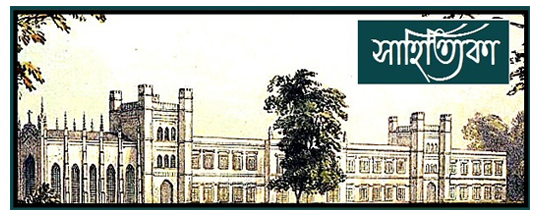
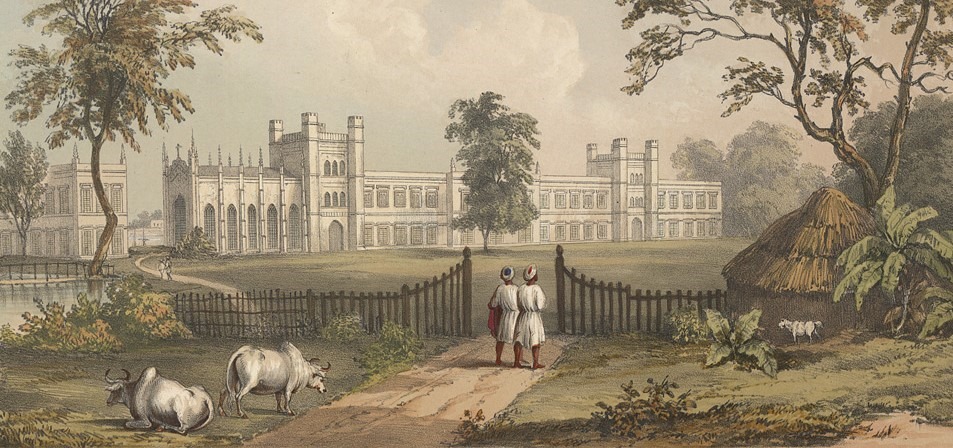

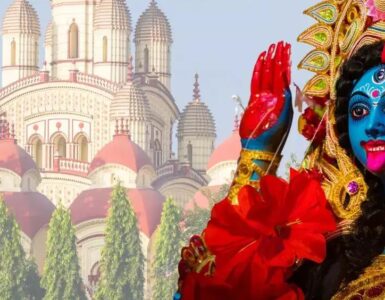
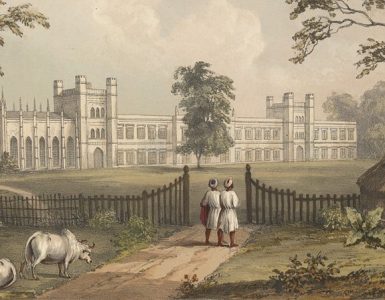









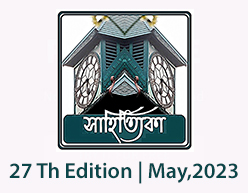
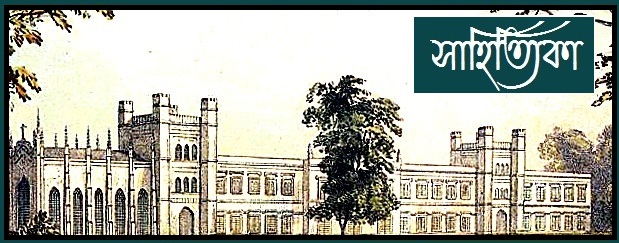
Add comment